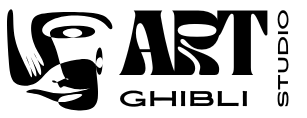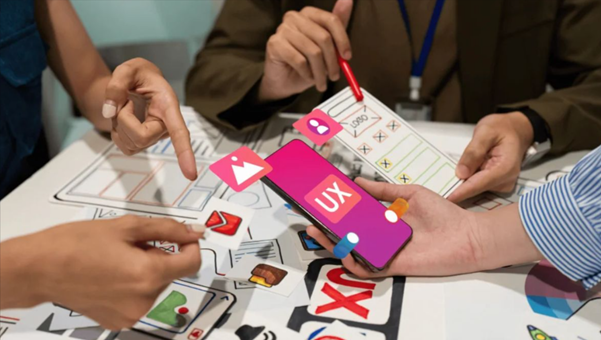Introduction
Pageflows vs Dribbble When it comes to finding design inspiration or improving your UX design, two names often come up—Pageflows and Dribbble. But which one is right for you? Whether you’re a seasoned designer or just starting out in the UI/UX world, choosing the right platform can supercharge your creativity and productivity. Let’s dive into this head-to-head comparison of Pageflows vs Dribbble.
Understanding the Basics
What is Pageflows?
Pageflows is a curated library of real-world UX user flows captured as video recordings. Think of it like peeking behind the scenes of successful digital products and seeing how their entire user experience is laid out.
Unique Features of Pageflows
-
Video walkthroughs of live apps/websites
-
Categorized by product types (onboarding, checkout, etc.)
-
Real UI/UX from real products
-
Insightful for UX researchers and product teams
Focus on UX Flows
Unlike visual design galleries, Pageflows emphasizes how a product works, not just how it looks. It helps you understand how a user interacts from entry to goal completion—very practical!
What is Dribbble?
Dribbble is one of the most popular platforms for UI design inspiration. It’s essentially a portfolio platform where designers share visual mockups, prototypes, and creative assets.
Unique Features of Dribbble
-
Showcase visual designs
-
Explore trends and concepts
-
Hire or get hired as a designer
-
Interactive feedback and likes
Focus on Design Visuals
Dribbble is all about eye candy. If you want to see the best-looking buttons, landing pages, or branding kits, this is your place. However, it’s usually conceptual work, not tied to live user experiences.
Key Differences Between Pageflows and Dribbble
UI vs UX Focus
-
Dribbble = User Interface (UI) – how things look.
-
Pageflows = User Experience (UX) – how things work.
Workflow vs Static Designs
-
Pageflows shows interactive user journeys.
-
Dribbble offers static mockups and prototypes.
Community and Engagement
-
Dribbble has a large, engaged creative community with feedback loops.
-
Pageflows is more niche, focused on professional research and analysis.
Access and Pricing Models
-
Dribbble has both free and premium plans.
-
Pageflows requires a subscription to access full libraries.
When to Use Pageflows
Ideal for UX Designers
If you’re mapping out user journeys or looking for real-world reference material for onboarding, login flows, or checkout paths—Pageflows is your best friend.
Great for Real User Flow Studies
No need to sign up for 50 apps to study their flows—Pageflows has already done that and organized it nicely.
Perfect for Product Teams and Developers
Want to show your team how Airbnb handles onboarding or how Shopify does checkout? Pageflows makes these flows visible and explainable.
When to Use Dribbble
Ideal for UI Designers and Visual Creators
Designers looking to keep up with the latest trends or wanting to showcase their work should have a presence on Dribbble.
Great for Branding and Concept Art
Dribbble is amazing for aesthetic exploration—logo treatments, app screens, typography experiments, and color palettes.
Perfect for Freelancers Showcasing Portfolios
Many freelancers land gigs through Dribbble. It’s like Instagram for designers—great visibility and networking.
Pros and Cons of Pageflows
✅ Pros:
-
Real-world UX examples
-
Categorized by product and interaction type
-
Saves time on competitor analysis
❌ Cons:
-
Paid access required
-
Less focus on UI visuals
-
Smaller community
Pros and Cons of Dribbble
✅ Pros:
-
Vibrant, global design community
-
Great for creative exposure
-
Free to browse and post
❌ Cons:
-
Often conceptual, not live products
-
Can be more style than substance
-
Lacks full journey context
How Both Platforms Complement Each Other
Design Research Workflow
A typical designer could start with Pageflows to analyze the functional UX, then head to Dribbble to get ideas for styling and UI. This combo can deliver both substance and beauty.
Using Pageflows and Dribbble Together
Use Pageflows for structure and Dribbble for style. It’s like combining a solid blueprint with a stunning paint job.
Case Studies and Use Scenarios
UX Flow Study for E-commerce Website
Pageflows helps identify how top brands design cart-to-checkout flows. You can reverse-engineer the logic.
Portfolio Building for UI Designers
Dribbble enables designers to build a slick, visual-first portfolio and get discovered by recruiters or potential clients.
Which One is Better for You?
For Beginners
Start with Dribbble for inspiration. But as you go deeper into how designs work, explore Pageflows.
For Professionals
Use both strategically. Let Pageflows guide your UX strategy, and Dribbble fuel your creative energy.
For Teams
Teams building real products should use Pageflows during planning, and Dribbble during UI/branding stages.
Future of UI/UX Design Platforms
Trends in UI/UX Design Tools
The future is about hybrid platforms that combine flows and visuals. Expect smarter integrations between tools like Pageflows, Figma, and Dribbble.
The Role of Community-Driven Platforms
Community feedback and collaboration (especially from Dribbble) will shape the next generation of design practices.
Conclusion
Choosing between Pageflows and Dribbble isn’t about picking a winner—it’s about understanding your goals. Want to master the user experience and see how top apps do it? Go for Pageflows. Want to wow people with your visual creativity and build a killer portfolio? Dribbble is the way to go. But honestly, using both is where the magic happens. Marry the brains of Pageflows with the beauty of Dribbble—and you’ve got yourself a powerhouse of inspiration.
FAQs
1. Is Dribbble good for UX designers?
It can be, especially for visual inspiration, but it lacks real user flow data—so it’s best used with other tools like Pageflows.
2. Can Pageflows help improve conversion rates?
Yes, studying high-performing UX flows can help you model better interactions and increase your conversion rates.
3. Are both platforms free?
Dribbble offers a free plan. Pageflows requires a paid subscription for full access, though some previews are available for free.
4. What’s better for design inspiration: Dribbble or Pageflows?
Dribbble is better for visual/UI inspiration, while Pageflows is better for UX and structural flow inspiration.
5. Can I use both tools in my workflow?
Absolutely! In fact, using both gives you a full-spectrum approach to creating beautiful and functional digital products.

